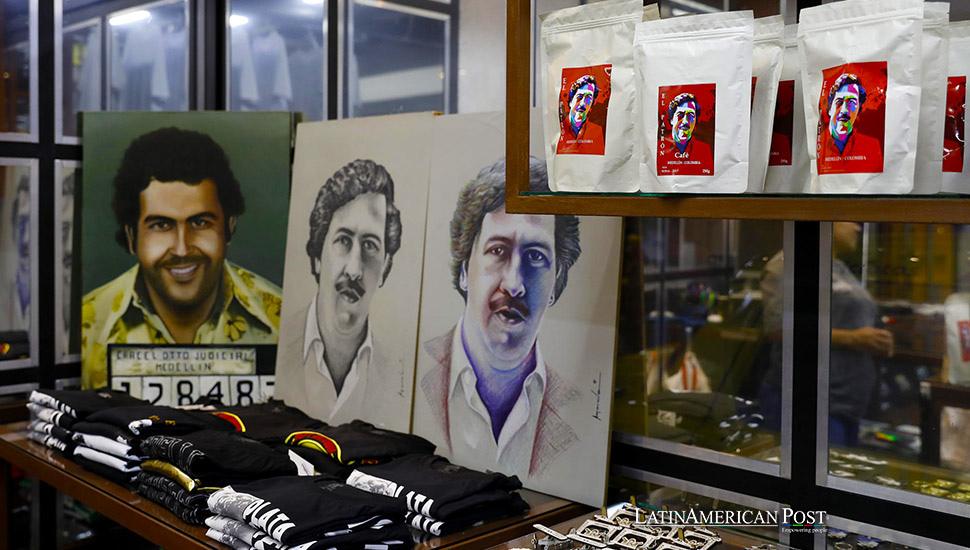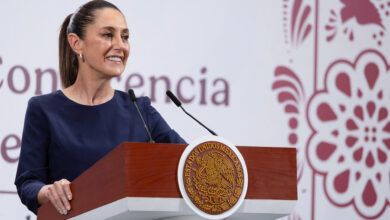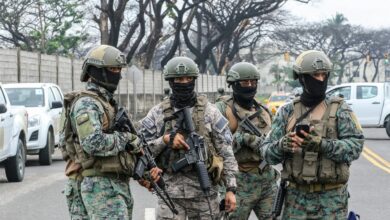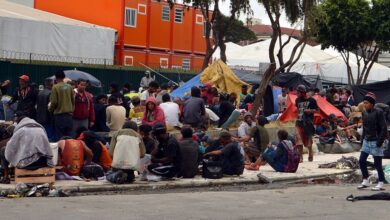The Glorification of Drug Lords in Latin America and the Caribbean

Despite their status as dangerous criminals, drug lords in Latin America and the Caribbean are often celebrated in music and culture. This article explores how figures like El Chapo, Pablo Escobar, and Christopher ‘Dudus’ Coke have become modern-day folk heroes, blurring the lines between criminality and heroism.
The world of Latin American and Caribbean drug lords is shrouded in a complex blend of fear, admiration, and myth. These figures, responsible for vast networks of illicit drug trafficking, violence, and corruption, are often portrayed as anti-heroes rather than the dangerous criminals they are. This glorification is deeply embedded in the cultural fabric of these regions, where music, particularly genres like narcocorridos, reggae, and dancehall, celebrates their exploits and, in some cases, immortalizes them as legends.
One of the most notorious examples is Joaquín Guzmán Loera, better known as “El Chapo,” whose life as a drug lord is not only a tale of crime but also one of public adoration. Another infamous figure is Pablo Escobar, whose legacy as the kingpin of the Medellín Cartel is as much about his criminal empire as it is about the myths that surround him. This article delves into the historical context and cultural factors that contribute to the glorification of drug lords in Latin America and the Caribbean, exploring how music and local lore transform criminals into folk heroes.
The Ballad of El Chapo
Joaquín “El Chapo” Guzmán’s rise to infamy is a tale that has captivated not only Mexico but the entire world. Born into poverty in the rural state of Sinaloa, Mexico, Guzmán’s life story is one of transformation from a young boy in a humble family to one of the most powerful drug lords in history. His Sinaloa Cartel became the largest and most influential drug trafficking organization in the world, moving vast quantities of narcotics across international borders.
However, what sets El Chapo apart from many other criminals is how specific segments of Mexican society have embraced him. This is particularly evident in the folk ballads known as narcocorridos, which celebrate the lives of drug lords and their exploits. Songs like “El Señor de las Montañas” (“The Man of the Mountains”) pay homage to El Chapo, portraying him as a Robin Hood-like figure who defies authority and takes care of his own. These ballads often gloss over the violence and devastation wrought by the drug trade, focusing instead on the perceived bravery, cunning, and loyalty of these criminal figures.
The adoration for El Chapo extends beyond music. In his home state of Sinaloa, Guzmán is seen by many as a local hero who, despite his criminal activities, represents the resilience and ingenuity of the Mexican people. This complex relationship between the public and drug lords like El Chapo underscores a broader societal issue in Mexico, where corruption, poverty, and violence have created an environment where criminals can be seen as protectors and benefactors rather than as enemies of the state.
The Legend of Pablo Escobar
Pablo Escobar is perhaps the most famous drug lord in history, and his legacy continues to cast a long shadow over Colombia and the world. As the leader of the Medellín Cartel, Escobar was responsible for a vast empire of cocaine production and distribution that made him one of the wealthiest men in the world. At the height of his power, Escobar controlled nearly 80% of the cocaine smuggled into the United States, and his cartel’s operations extended across multiple continents.
Escobar’s story is one of extremes. On one hand, he was a ruthless criminal who ordered the deaths of thousands, including police officers, politicians, journalists, and civilians. His reign of terror included bombings, assassinations, and the systematic corruption of Colombia’s institutions. On the other hand, Escobar was also a master of public relations, carefully crafting an image of himself as a benefactor to people with low incomes. He invested millions of dollars in building housing, schools, and sports facilities for the underprivileged in Medellín, earning him the nickname “Robin Hood Paisa.”
This duality is at the heart of Escobar’s enduring legend. While many Colombians view him as a villain who brought untold suffering to their country, others remember him as a man who cared for his people. This romanticized image has been perpetuated through various forms of media, from television series like “Narcos” to countless books, documentaries, and songs. The narcocorridos dedicated to Escobar, similar to those celebrating El Chapo, often focus on his cunning, his ability to evade capture, and his purported generosity.
Escobar’s impact on Colombian culture is profound. Even decades after his death, his life inspires fascination and fear. His story is a cautionary tale about the dangers of unchecked power and the corrosive effects of the drug trade on society. However, the glorification of Escobar also highlights the complex relationship many in Latin America have with figures of authority, where the lines between heroism and criminality are often blurred.
The Cultural Reverence of Griselda Blanco
While male drug lords often dominate the narrative, Griselda Blanco, known as “La Reina de la Cocaína” (“The Queen of Cocaine”), carved out her notorious legacy in the world of narcotrafficking. Blanco, a Colombian drug lord, was one of the pioneers of the Miami-based cocaine drug trade in the 1970s and 1980s. Her cruelty and cunning earned her a fearsome reputation, and she became a crucial figure in the Medellín Cartel.
Despite her brutal methods and the violence she unleashed, Blanco, like many of her male counterparts, has been mythologized in popular culture. Songs, documentaries, and films have depicted her life, often focusing on her rise from poverty to power and her role as a woman in a male-dominated underworld. In Colombia, where the drug trade has left a deep scar on the nation’s history, Blanco’s story is one of both infamy and fascination.
Blanco’s life has been romanticized to the extent that she is often portrayed as a symbol of empowerment, a woman who defied the odds to become an influential figure in a dangerous world. This portrayal, however, glosses over the enormous human cost of her actions, including the countless lives lost to drug-related violence and addiction. Glorifying figures like Blanco raise questions about how society remembers and interprets the past, particularly regarding the darker chapters of history.
Jamaica’s ‘Dudus’ Coke
The case of Christopher “Dudus” Coke, a Jamaican drug lord, provides another stark example of how criminal figures can be both feared and revered. Coke was the leader of the Shower Posse, a violent gang involved in drug trafficking and other criminal activities in Jamaica and the United States. Despite his criminal empire, Coke was deeply embedded in his community in Tivoli Gardens, a neighborhood in Kingston, Jamaica. To many residents, he was seen as a protector and benefactor who provided for the community in ways the government could not or would not.
This complex relationship between Coke and the residents of Tivoli Gardens came to a head in 2010 when the Jamaican government sought to extradite him to the United States. The attempt to capture Coke led to widespread violence as hundreds of armed supporters clashed with police and military forces. The resulting conflict, which became known as the Tivoli Incursion, left nearly 70 civilians dead and highlighted the deep divide between the Jamaican government and its most marginalized communities.
Coke’s ability to inspire loyalty and sacrifice among his supporters underscores the blurred lines between criminality and heroism in societies plagued by inequality and neglect. In a country where many feel abandoned by the state, figures like Coke can become symbols of resistance and self-sufficiency, even as they engage in activities that undermine the rule of law.
The Power of Music in Shaping Perceptions
In both Latin America and the Caribbean, music plays a crucial role in shaping public perceptions of drug lords. Narcocorridos in Mexico, dancehall in Jamaica, and Trinidad in Trinidad and Tobago all serve as cultural vehicles through which the stories of these criminals are told and retold, often in ways that elevate them to the status of folk heroes.
For example, dancehall music has long been associated with themes of violence, crime, and resistance in Jamaica. Artists like Bounty Killer and Super Cat have produced songs that glorify gang life and the struggles of urban populations. Tracks like “Gun Heaven” and “Ghetto Red Hot” celebrate the toughness and resilience of those who live in Kingston’s most dangerous neighborhoods while also perpetuating a culture of violence.
Similarly, in Trinidad and Tobago, the rise of the Trinibad genre—a local subgenre of dancehall—has brought the realities of the drug trade and gang violence into the musical mainstream. Songs like “Rifle War” by Rebel Sixx and “Pablo” by Prince Swanny depict the harsh realities of life in communities where the drug trade is a dominant force. These songs not only reflect the lived experiences of many young people in Trinidad and Tobago but also contribute to the normalization of violence and criminality.
The influence of music in these societies is profound. It shapes the narratives around drug lords, casting them not simply as criminals but as complex figures who navigate a world of poverty, corruption, and violence. Through music, the stories of these drug lords become part of the cultural consciousness, blurring the lines between heroism and villainy.
Historical Context: The Roots of Glorification
The phenomenon of glorifying criminal figures is not unique to the modern era. Throughout history, societies have often romanticized outlaws and rebels, particularly during social upheaval and economic disparity. For example, in the United States during the Great Depression, figures like Bonnie, Clyde, and John Dillinger became folk heroes, celebrated for their defiance of authority and ability to evade capture.
The tradition of romanticizing bandits and rebels in Latin America dates back even further. In the 19th century, figures like Pancho Villa in Mexico and Lampião in Brazil became legendary for their roles as social bandits—individuals who were also seen as fighting against an unjust system while engaging in criminal activities. These figures were often celebrated in songs, poems, and stories, much like today’s drug lords are in narcocorridos and other musical genres.
The glorification of modern-day drug lords like Pablo Escobar can be seen as a continuation of this historical tradition. Escobar’s life, for instance, mirrors the archetype of the social bandit in many ways. He was a man who, despite his violent and criminal methods, was seen by some as a defender of the poor and a challenger to the corrupt elites. His investments in Medellín’s poor neighborhoods, building soccer fields, housing, and schools, earned him a Robin Hood-like status among some of the local population, despite the widespread suffering caused by his drug empire.
Escobar’s story is also emblematic of how deeply entrenched corruption and inequality can allow criminal figures to thrive. In a society where government and law enforcement are often seen as corrupt or ineffective, individuals like Escobar can position themselves as alternative sources of power and authority. This dynamic not only perpetuates the cycle of violence and criminality but also creates fertile ground for the mythologization of such figures.
The Legacy of Escobar in Media and Popular Culture
Pablo Escobar’s life and legacy have been extensively documented and dramatized in various forms of media, further cementing his status as a cultural icon. The Netflix series “Narcos,” which chronicles Escobar’s rise and fall, has brought his story to an international audience, blending historical fact with fiction in a way that both informs and entertains. While “Narcos” portrays the brutal reality of Escobar’s reign, it also contributes to the myth-making process, presenting him as a larger-than-life figure whose influence extended far beyond Colombia.
The portrayal of Escobar in “Narcos” and other media raises important questions about the ethics of dramatizing the lives of such figures. While these stories are compelling and often serve as cautionary tales, they also risk glamorizing the very violence and criminality they seek to critique. The danger lies in the possibility that audiences, particularly those in regions deeply affected by the drug trade, might begin to see Escobar and his ilk as more heroic than villainous.
This glamorization extends to music as well, where Escobar’s name is often invoked in lyrics that celebrate his wealth, power, and defiance of the law. In narcocorridos, for example, Escobar is depicted as a man who outsmarted the authorities and lived by his own rules. These songs contribute to the narrative that Escobar, despite his many crimes, was a man to be admired for his audacity and success.
The Impact of Glorification on Society
The glorification of drug lords like Pablo Escobar, Joaquín “El Chapo” Guzmán, Griselda Blanco, and Christopher “Dudus” Coke has profound implications for society. By transforming these figures into folk heroes, popular culture can perpetuate a dangerous narrative that blurs the lines between right and wrong. This narrative can have a particularly pernicious effect on young people in regions where the drug trade is a pervasive part of daily life.
In communities plagued by poverty, violence, and corruption, the myth of the drug lord as a benevolent figure can be especially appealing. For many, the stories of these criminals offer a sense of hope and empowerment, presenting an alternative to the bleak realities they face. However, this idealization also serves to normalize criminal behavior, making it seem like a viable path to success and respect.
Moreover, the glorification of drug lords can undermine efforts to combat the very issues that give rise to these figures in the first place. By celebrating individuals like Escobar and Guzmán, society risks perpetuating the cycle of violence and corruption that allows the drug trade to flourish. This not only hinders progress toward justice and stability but also further entrenches the power of criminal organizations.
Moving Beyond the Myth
To counter the glorification of drug lords, it is essential to address the underlying social, economic, and political conditions that give rise to these figures. This includes tackling poverty, inequality, and corruption, as well as strengthening the rule of law and providing opportunities for young people in vulnerable communities.
Education and media literacy are also crucial in helping people, especially the youth, critically engage with the stories they consume. By fostering a better understanding of the realities behind the myths, society can begin to dismantle the narratives that glamorize criminality. This involves not only challenging the portrayal of drug lords in music, film, and television but also promoting alternative stories that highlight the resilience and potential of communities impacted by the drug trade.
In Colombia, for example, there have been efforts to reclaim the narrative around Pablo Escobar. Initiatives like the Escobar family’s renunciation of his legacy, as well as projects aimed at educating young people about the true cost of his actions, are steps in the right direction. These efforts seek to shift the focus away from the mythologized figure of Escobar and toward the broader societal issues that need to be addressed.
The public perception of drug lords in Latin America and the Caribbean is a complex and multifaceted issue. While these individuals are responsible for enormous harm, their stories are often told in ways that highlight their cunning, bravery, and ability to defy authority. Through music and local lore, they are transformed from criminals into legends, their exploits celebrated rather than condemned.
This duality of perception speaks to broader societal issues in these regions, where poverty, inequality, and corruption have created environments in which crime can be romanticized. The glorification of drug lords is a symptom of deeper structural problems that must be addressed if these societies are to move beyond the cycle of violence and criminality.
Also read: Medellín: A Tourist Haven Still Grappling with Violence
Understanding this phenomenon requires a nuanced approach, one that recognizes the historical and cultural factors at play. By exploring the stories of figures like El Chapo, Pablo Escobar, Griselda Blanco, and Christopher “Dudus” Coke, we can begin to unravel the complex web of factors that contribute to their glorification and, in turn, work toward creating a society where crime is no longer celebrated, but rather, rightly condemned.





